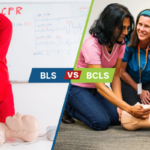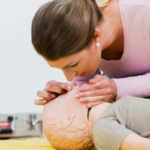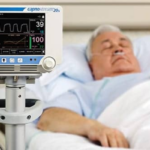
- Last Updated On: May 29, 2024
Things To Learn In CPR & First Aid Training
Acquiring CPR and First Aid certification online is investing in your safety and that of the individuals around you. It equips individuals with the ability to take swift and effective action in emergencies, meaning the difference often between a life and death situation and the arrival of professional help.
From preparing for a broad array of scenarios, to providing a background in the underlying science, such comprehensive CPR and first aid training online will leave you confidently prepared to take potentially life-saving action.
Why Is CPR and First Aid Important?
During emergencies having an understanding of CPR and First Aid can significantly impact the results. When breathing or blood flow stops, immediate action is vital. Knowing how to perform CPR could be the difference between life and death.
Applying these skills promptly by assessing such situations highlights the importance of CPR providing help that could potentially save lives. This blog discusses the learning points from first aid CPR training giving you the knowledge required to react with confidence and skill, in situations.
Understanding CPR And First Aid Training
Basic CPR training forms the foundation of emergency response efforts, teaching you how to perform chest compressions and rescue breaths effectively. This segment is pivotal for anyone looking to understand how to become first aid certified, highlighting the seamless integration of CPR techniques in saving lives.
Inclusion of Automated External Defibrillators (AEDs) used in CPR/first aid trained courses significantly boosts the chances of survival after cardiac arrest. Learning to operate these devices is a critical skill, enhancing the scope of emergency interventions in public spaces.
The approach to CPR varies by the patient’s age. Training ensures you’re adept at modifying your technique, whether aiding adults, children, or infants, emphasizing the versatility required in CPR and First Aid certification online.
Read More: Goals of First Aid Training
First Aid Essentials
First aid training treats cuts, scrapes, burns and wound care, bandaging, and recognizes when professional medical advice is necessary.
Learning deeper into First Aid Essentials reveals the profound impact of mastering these fundamental skills on everyday safety and emergency responsiveness. Beyond the immediate treatment of minor injuries, this training instills a nuanced comprehension of injury severity, guiding individuals on when to escalate care to healthcare professionals. It equips participants with the judgment to differentiate between manageable incidents and those requiring advanced intervention, thereby preventing complications and promoting optimal recovery.
This aspect of first aid training not only enhances individual capability but also contributes to a broader societal understanding of health and safety, underscoring the importance of informed, immediate care in preserving well-being.
Managing Severe Trauma
First Aid and CPR Training also covers the management of severe injuries, preparing any individual to stabilize and minimize harm in critical situations. This knowledge is indispensable in emergency first aid classes, providing clarity on actions that can mitigate the impact of major traumas.
Such training is vital in the golden hour—the initial period after a traumatic event when the right actions can significantly influence outcomes. By preparing trainees to act swiftly and efficiently, it bridges the crucial gap before professional medical help arrives, potentially saving lives. This advanced knowledge empowers individuals not only with the skills but also with the confidence to make a real difference in dire situations, underscoring the profound value of comprehensive emergency preparedness.
Practical Skills Required
CPR and First Aid training often employs scenario-based learning to mimic real-life emergencies. This method enhances the applicability of your skills, fostering a deeper understanding and readiness for actual crisis situations.
The key for CPR/first aid trained individuals is consistent practice. Engaging in hands-on application of CPR and First Aid techniques solidifies your ability to perform under pressure, ensuring a confident and effective response when needed.
With CPR and First Aid guidelines evolving, staying updated through CPR and First Aid certification online courses is crucial. This commitment to continuous learning guarantees that your skills remain relevant and highly effective.






